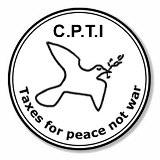Led by Oliver Haslam (UK); 8 Participants
Report by Gertie Brammer (Germany)
Purposes of communicating with press and public:
- To reach like-minded people
- To reach a wider public for raising more consciousness about our topic
- To have the press create a written and pictorial archives about our concerns
- To get the press to do more research on our topics
- To become clearer in our own mind by looking for simpler and better words to explain our concerns. For example finding positive terms instead of negative ones (
conscientious objector
is better thanwar tax resister
): CO to war taxes.
These purposes we can achieve in the press (news articles, feature articles) or in raising attention at events.
A: Press:
Types of journals and how to come in, for positive mention:
National Press:
- Higher quality, smaller public, difficult to come in. For example: An eloquent well-known person tells a very good real story (e.g. a court case).
- Lower quality, broader public, better chance to come in. For example: give the journal interviews with 4 or 5 very different activists, photographs included. Among them should be several, but at least one good-looking, pretty young woman (!).
- Let the main points be told in the interviews – background as short as possible in between.
Regional and Local Press:
- These journals are fond of any type of topic and theme as long as they are related to the real present-day local or regional level of their readers. Easier to come in.
Important are:
- think like a journalist: good presentation. Keep the story short, it must include all main topics; in addition furnish a background article with details, this will help journalists to write their feature article. Make it easy for them.
- good timing (give a first press-release 6-7 days before event, and a second one 1-2 days before).
- funny headlines (with a joke in it, with alliteration etc).
- profound knowledge about the Who-Why-What-Where and When in the press.
- keep contacts alive (mail them every small development, call them by phone from time to time).
B: Public
Don't be shy – be effective! Let yourself be seen, be heard, and let your message be clear and focused! Let actions be funny and have quality!
1. Demonstrations and Street Theatre
At demonstrations our clothes should differentiate us radically from other demonstrators and we should do unexpected, surprising things.
Oliver told about a demonstration in the neighbourhood of an arms fair. He went to the participants of this fair, being clothed like them in banker's suit and with a banker's briefcase. No problem to come close to the VIPs! Then he opened his briefcase and distributed false banknotes dirty money
). Immediately journalists were at the spot. His message was twofold:
- x-millions of pounds go to the military;
- with this amount of money we could indeed do better things: ----.
In the same clothes he went to a festival and attracted the attention of the young people. They were surprised, quickly interested and ready to get involved in immediate action. Here fun is the opening to raising consciousness.
2. Printed materials
If folders etc. look attractive and professional – people will take them. If they are easy to read – people will go through the whole text. Work with photographs and graphics (scanner) – here also quality wins. If you try to put your message into the newsletters of other organisations:
- make it easy for them;
- don't ask for money or membership (the host won't like to loose his money and his members!);
- ask for action only, and offer more information.
3. Website
It should be very easy to get in and to grasp the message and the main themes immediately. Good examples:
Indymedia; Jubilee 2000 (Jubilee Debt Campaign).
